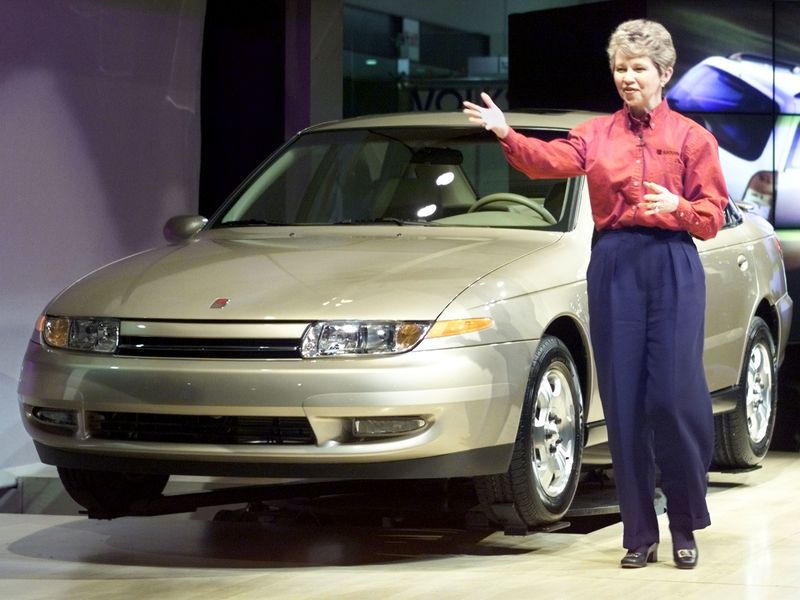
Saturn, General Motors’ experiment at matching the wizardry of Japan’s car manufacturers, took nearly a decade to expand beyond small cars with the midsize L-series. It debuted on March 31, 1999, at the New York Auto Show and went on sale that summer.
The L-series, derived from a heavily modified Saab 9-3 and Opel Vectra chassis and platform, was Saturn’s first crack at shaping plastic body panels onto a midsize car. It was available as a sedan or wagon with the 2000 model year.
The car’s 2.2-liter, dual-overhead-cam four-cylinder engine made only 137 hp. The engine, featured on the LS and LS1 sedans, as well as the LW1 station wagon, was all-new and exclusive to Saturn. The New York Times called it the best small engine GM had offered in the United States and the company’s quietest small dual-cam engine yet to date.
The LS2 featured a British-built, 3.0-liter V-6 that was a variant of an Opel engine used in the Cadillac Catera and Saab 9-5. It produced 182 hp.
The four-cylinder models were paired with a five-speed manual transmission or an optional four-speed automatic gearbox. The V-6 was available only with the automatic transmission.
Reviews were mixed, with Popular Mechanics calling the L series “pure mediocrity.”
“European breeding made the L-Series fun to flog around,” the Times said.
Consumer Reports called it “a lackluster effort based on an older Opel design.”
In a January 2003 review of the freshened L200, the magazine noted “the Saturn L-Series added nothing extraordinary to the class when it made its debut three years ago; it now feels a generation behind.”
Saturn dropped the L series in 2005 and replaced it with the Aura in August 2006 for the 2007 model year.
About 406,300 L-series cars were built at GM’s plant in Wilmington, Del., which was retooled to assemble two roadsters — the Pontiac Solstice and Saturn Sky.
The Aura was built on GM’s Epsilon platform shared by the Pontiac G6 and Chevrolet Malibu.
Saturn was dropped in 2009 as part of GM’s post-bankruptcy restructuring when a buyer could not be secured. The brand’s U.S. sales peaked in 1994 at 286,003, well below GM’s goal of 500,000 annually.